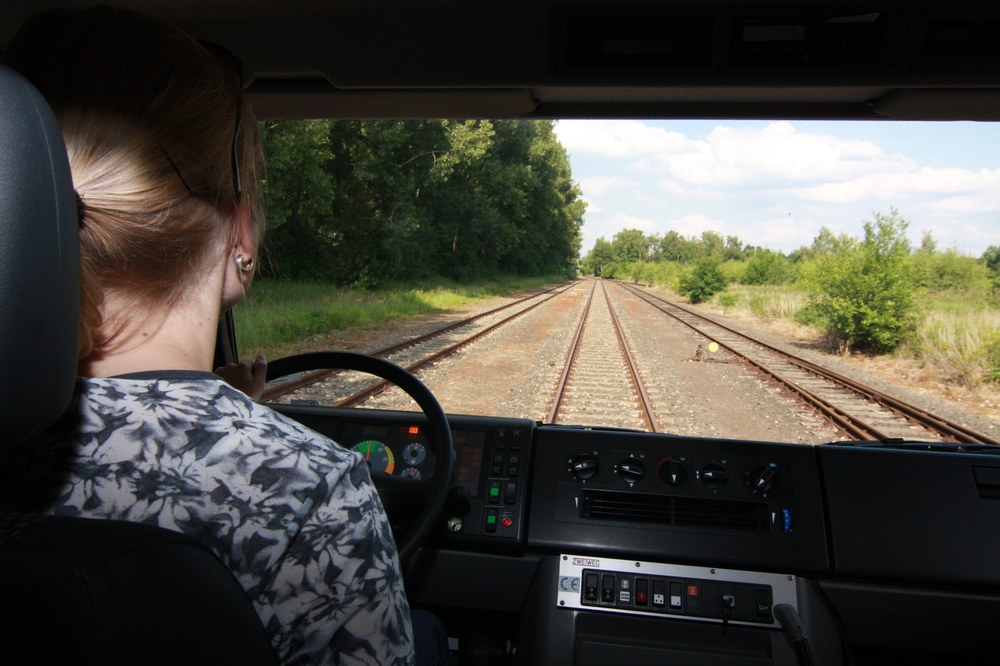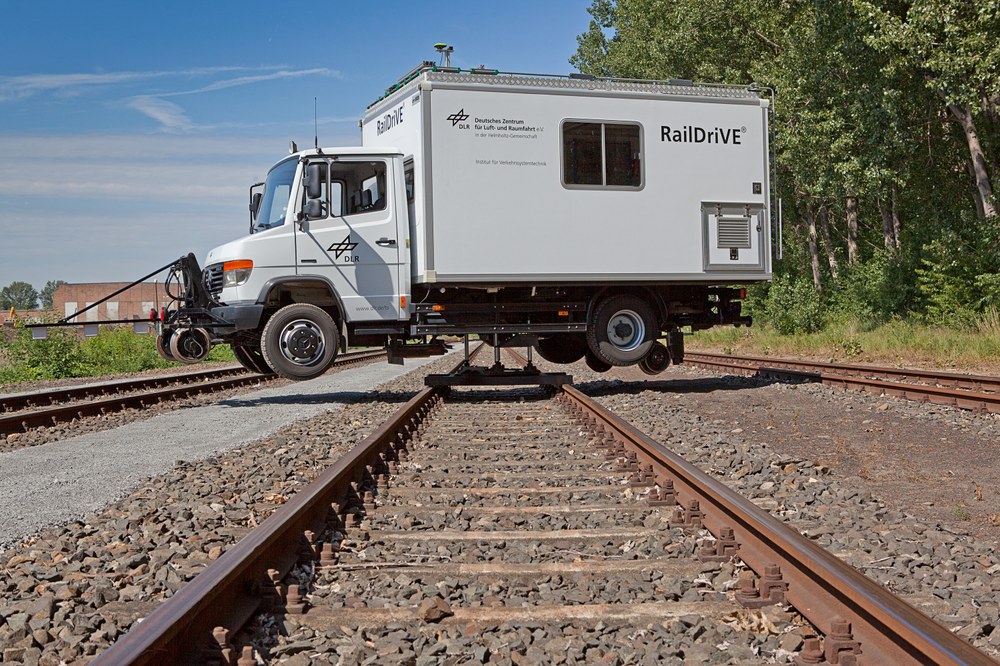RailDriVE® - A test vehicle for road and rail
The RailDriVE® test and measurement vehicle of the DLR Institute of Transportation Systems makes it possible to acquire data on all types of routes. The vehicle can be used both on the road and on rails for developing and testing systems used to locate and track vehicles or for recording the condition of infrastructure.



What special features does the RailDriVE® vehicle offer?
The RailDriVE® is used as a road vehicle to prepare tests before it is used as a rail vehicle directly on the track that will be tested. The vehicle can be used to test new vehicle tracking components under realistic conditions. These tests support the evaluation of fault influences and the approval process for new technologies. The RailDriVE® is also used to measure track geometry. These measurements are used to produce highly accurate digital maps of the travelled route.
Another important application is the development and testing of collision avoidance systems that are independent of any one type of infrastructure. These systems provide additional safety during shunting operations, in construction sites and on lines that have not yet been technically secured. As a final contribution to rail safety, the RailDriVE® is used to reliably detect faults in the track superstructure.
Thanks to its modular architecture, the equipment on the RailDriVE® can be expanded at short notice according to its intended use. All recorded data can be evaluated online using the computer workstation inside the RailDriVE®.
Benefits of the RailDriVE® research vehicle
- Customers and external partners can book the RailDriVE® for their own tests or access the data collected by DLR
- The RailDriVE® is available to customers as a platform for developing applications using the European Galileo satellite navigation system
- DLR can develop suitable algorithms to combine the various location sensor data upon request
- The research vehicle can be used year round and under various weather conditions
Application
The RailDriVE® enables the following activities:
- Testing of location and tracking technologies in real railway operations
- Recording and validation of highly accurate digital route maps
- Assessment of railway infrastructure condition (such as faults in the track superstructure)
- Reference station for Differential Global Navigation Satellite System (DGNSS) applications
- Testing of communication systems
- Platform for testing the European Galileo satellite navigation system
General and technical data
General data
- Location: Braunschweig, DLR Institute of Transportation Systems
- Commissioning: 2007
- Operation: Year round
- Type of vehicle: Mercedes-Benz Vario 816 D
- Weight: 7,490 kilograms
- Track gauge: 1435 millimetres
- Approval: EBO, TÜV
- Software: C/C++, Qt Framework, Bash, Python
Technical data
Hardware
- Dell Servers: 24 CPU, 47 gigabyte RAM, 1500 gigabyte HDD, Debian Linux Distribution
- NTP Server
- GNSS antenna
- GSM modem
- Windows PC
- Mac Mini
Sensors
- JAVAD Sigma
- JAVAD Delta
- uBlox
- XSensMTi
- XSensMTiG
- Honeywell Radar
- Siemens Radar
- Deuta Radar
- Odometer
- Correvit Rail
- Balise antenna
- Accelerometers
- Microphone
- Camera
Other
- Uninterruptible Power Supply (UPS)
FAQ – frequently asked questions about the RailDriVE® research vehicle
Can customers provide DLR with data for testing with the RailDriVE®?
Upon request, DLR can develop suitable algorithms to combine the various location sensor data for customers or support them in doing so. Tests and the evaluation of different sensor combinations can be carried out in order to derive the best combination according to customer requirements.
Can I carry out my own tests with the RailDriVE®?
DLR makes all large-scale facilities and research vehicles available to external partners and customers for their own data acquisition and technology testing.
What is the procedure for booking the RailDriVE®?
To book the RailDriVE®, please submit an enquiry using our booking form. We are happy to answer any further questions you may have.
